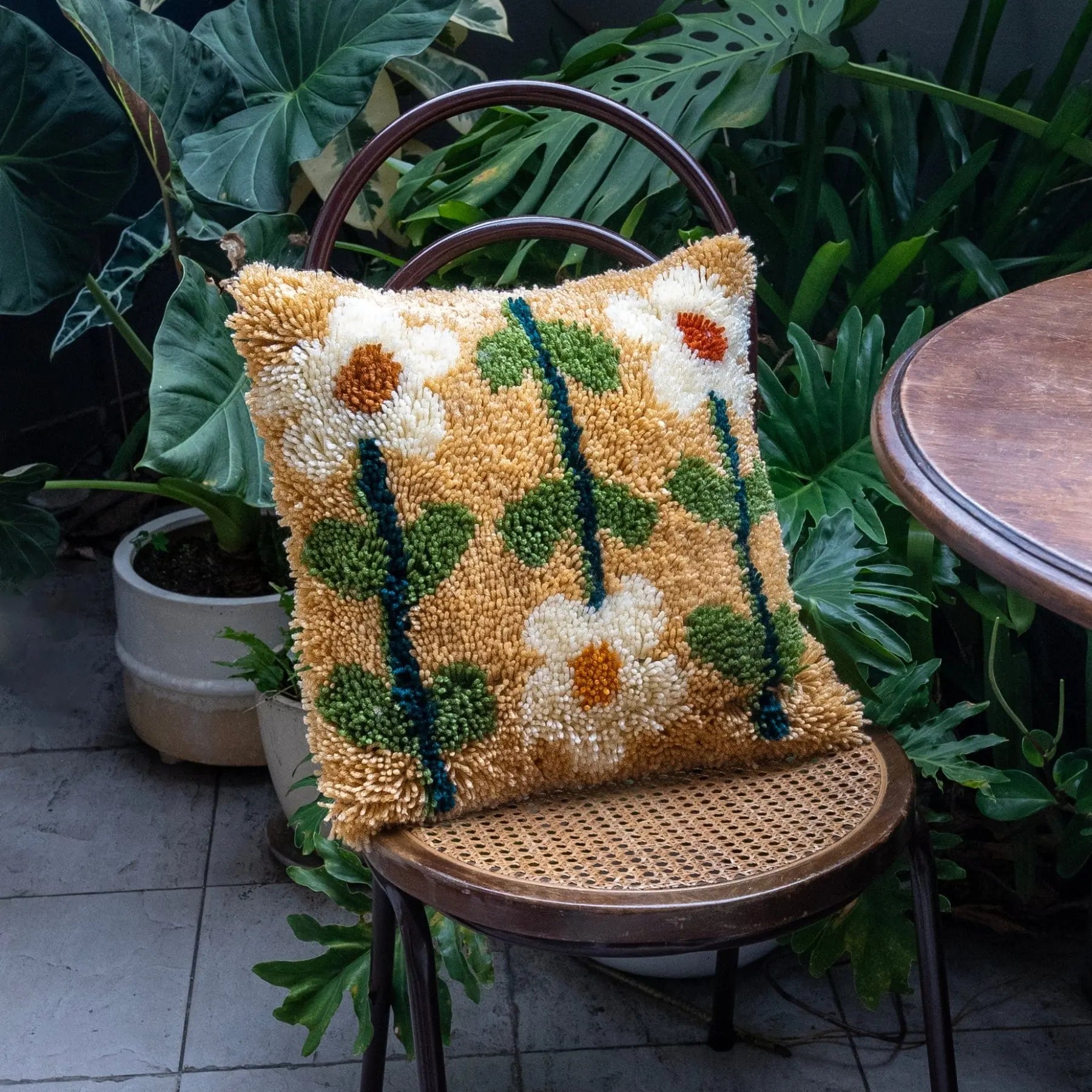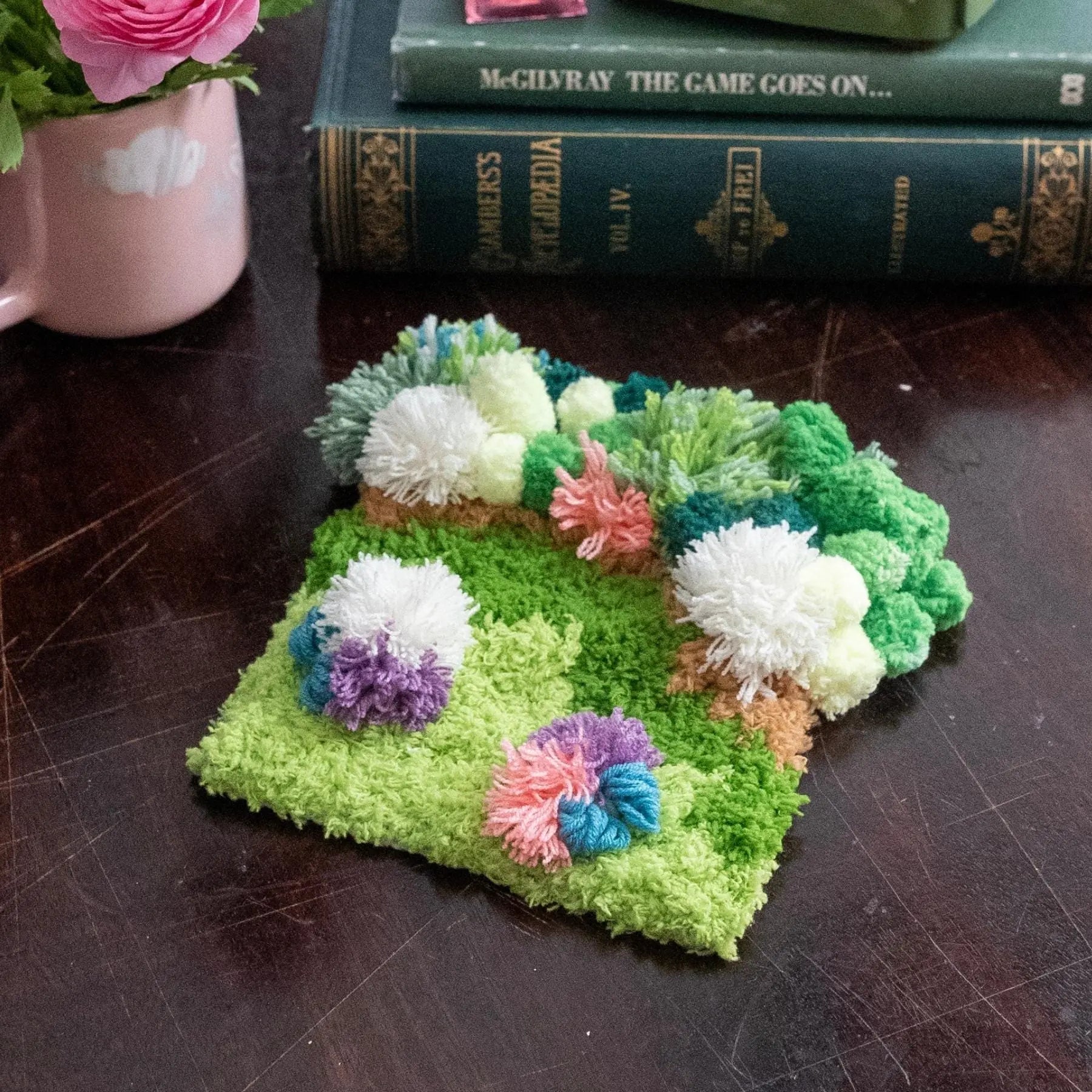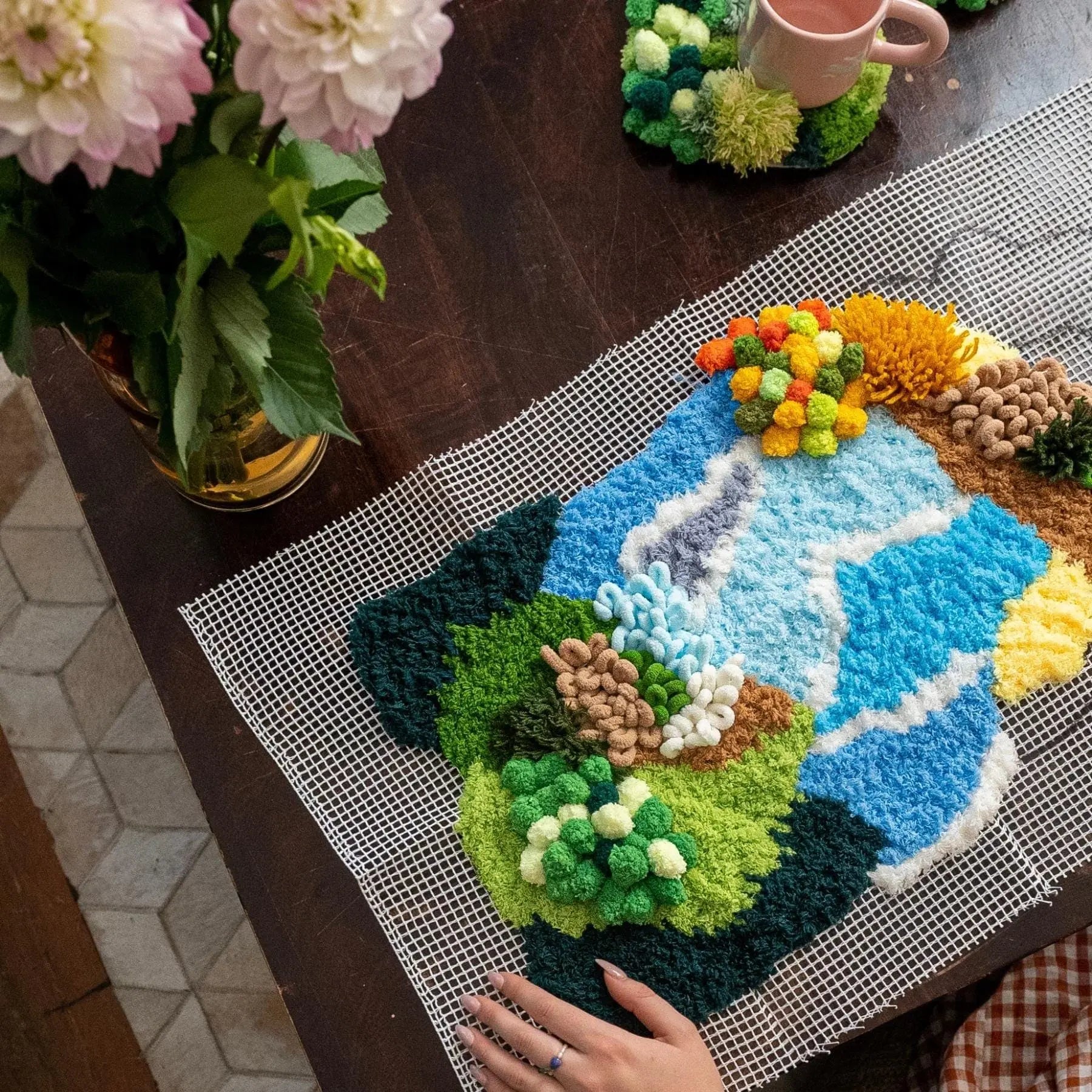Step by Step Guides
Ruff & Tumble
Welcome to our step by step guide for your Ruff & Tumble embroidery kit! I'm so grateful that you've chosen to try embroidery with one of our kits.
This step-by-step guide can be used in addition to or instead of your paper instructions. The benefit of this guide is that each stitch tutorial is listed below, making it even easier to complete your piece without stress!
If you find yourself having any trouble with stitches, reach out to me at hello@craftclubco.com to book a one-on-one 'help me!' session.
Without further ado, LETS GET STITCHING!
Prepping Your Hoop & Thread
Before beginning your kit, you'll be setting up your hoop and threading your needle.
Setting Up Your Hoop
- To put your fabric into your hoop, separate the inner and outer hoop by loosening the metal screw at the top.
- Place your inner hoop (the one without the metal piece) under your fabric, roughly centering your design in the middle. Then place your outer ring on top of the fabric.
- Use the screw to tighten the hoop until the fabric is taut like a drum. This can take a bit of time. Start by screwing it a little tighter, then adjust the fabric, then screw again before finally pulling the fabric so it's nice and tight in the hoop.
- Don't worry if the design isn't perfectly in the middle of the hoop, as you'll be able to adjust it after you've completed!
Threading Your Needle
- Your thread comes as six individual strands combined to make one string. When stitching we will often split the string and used the desired number of strands for the stitch.
- Cut approximately 60cm (or roughly an arms length) of thread then separate the number of strands you'll need for the following stitch.
- For your very first step you'll need 3 strands of your #437 (light brown) thread. This means you'll be splitting the thread into half, with each section having 3x strands each.

- Use one of your pink needle threaders to thread your needle, pulling the thread partially through the needle. Don't pull the thread all the way through to the middle, just enough so it feels secure and your needle won't slide away.
- Then tie a knot at the end of your thread. You can do a double knot if you like, but just a single knot is usually enough for the type of linen included in your kit.

Beginning Your Ruff & Tumble
For this piece you'll only need 3x stitches!
Stitches Included:
- Long & Short Stitch
- Straight Stitch
- Satin Stitch

Step 1
We're going to start your autumnal piece by stitching the body of the puppy. The entire body uses 3 strands of thread and LONG & SHORT STITCH. The trick with this stitch is not to be too worried about making it precise. It's meant to look like fur after all!
Begin with #437 (light brown) for the tail, making sure your stitches go in the direction the puppy's fur would go. Then stitch the body with #436 (mid brown) and finally the legs with #975 (dark brown). Use STRAIGHT STITCH to outline the front legs and paws of the puppy in the same colour.
Straight Stitch Video Tutorial - by American Quilting
Long & Short Stitch - by Love Crafts
Step 2
Next it's time to stitch the puppy's face! To create a delicate effect, we're only using 1 strand of thread for both colours. While this takes longer than using more strands, the effect is that the puppy's face looks softer than the rest of it's body.
Using #437 (light brown) and LONG & SHORT STITCH to fill in the mouth area, leaving space for the nose and rosy cheeks. Then use #436 (mid brown) to fill in the eye area, leaving space for the eyes
For the Long & Short Stitch Tutorial, see Step 1.
Step 3
Next it's time to work on the puppy's eyes, nose and cheeks. Using 3 strands of #310 (black) thread, use SATIN STITCH to fill in the nose and eye shapes. Then use 3 strands of #816 (red) to fill in the rosy cheeks.
The last step of your puppy's face is the floppy ears. Use 3 strands of #436 (mid brown) to fill in the ears with LONG & SHORT STITCH. Try to make the stitches go vertically, in the same direction that the puppy's fur would sit.
Satin Stitch Video Tutorial - by Cutesy Craft
Step 4
Now it's time to stitch the cosy beanie and scarf, this whole section use 3 strands of thread. Start with the #912 (light green) and fill in the middle of the beanie using SATIN STITCH. Then fill in the bobble and ribbing of the beanie with #3818 (dark green) thread.
Stitch the scarf using SATIN STITCH in a horizontal direction. The left side of the scarf uses #3818 (dark green) and the right uses #912 (light green). Lastly, add the tassels and lines onto the scarf and beanie using #310 (black) thread and STRAIGHT STITCH.
For the Satin Stitch Tutorial, see Step 3.
For the Straight Stitch Tutorial, see Step 1.
Step 5
Now you're onto the home stretch! You'll be using five cosy colours to fill in all the leaves on the ground beside your puppy. All the leaves are stitched using 3 strands of thread, using #437 (light brown), #922 (light orange), #919 (dark orange), #816 (red) and #728 (yellow).
You will use a SATIN STITCH to fill in each of the leaves. When filling in a leaf with satin stitch, you can change the look of your leaf depending on which direction you make your stitches. For these leaves, we've used a simple vertical direction for your stitches.
Try to follow the colours in the design image, but don't worry if you make a mistake. Just keep stitching the leaves in different colours and you won't be able to see any difference in the finished piece.

For the Satin Stitch Tutorial, see Step 3.
Step 6
The last step is to stitch the falling leaves using a SATIN STITCH. These leaves also use 3 strands and the same colours as the leaves surrounding the puppy.
And you are done! Congrats on finishing your cosy Ruff & Tumble embroidery piece!
For the Satin Stitch Tutorial, see Step 3.
You've Finished Your Masterpiece!
Washing Your Piece
If there are blue lines from the pattern still visible when you've finished your piece, it's time to give it a rinse. If you can't see any blue lines (or they're small enough not to be noticeable) skip this step and go straight to backing your hoop!
To wash your lines off, take your fabric out of the hoop and rinse under warm water. You can gently rub the ink with your fingers to remove it. If the ink is being stubborn you can even rinse your fabric with a mild soap.
Once it's clean, leave your piece to dry on a flat on a hand towel away from direct sunlight. You can also press another hand towel gently on top of it to soak up excess water.
Ironing Your Piece
If your piece is very wrinkled, you may want to iron it. Generally, you won't need to do this unless it's very creased because the action of tightening the fabric in your hoop will remove small wrinkles.
Place your embroidered piece upside down on a towel on top of your ironing board. You want the back of your embroidery facing upwards. Next place a tea towel on top of your embroidered piece, to protect it from the direct heat of the iron.
Iron your piece on a medium setting, checking your piece as you go. If the creases are stubborn you can increase the setting of your iron, as linen and cotton are okay with higher temperatures. I always suggest doing this gradually, rather than going in straight away with full heat, as the last thing you want to do is burn your piece!
Backing Your Hoop
- When you've finished your design, it's time to back your hoop so it's ready to display! Before backing, make sure your design is centred in the hoop.
- With your hoop facing down, cut off your excess fabric, leaving approx. 1.5cm around the edge of your hoop.
- Using approx. 70cm of any thread colour, thread your needle and tie a knot at the end.
- Starting at the top of the hoop, we are going to use a running stitch around the hoop, across the excess fabric. When you've reached the top again, you can pull the thread firmly to pull the fabric towards the middle. This will stop it from showing at the front.

- Once it's tight, secure your thread at the top with a knot. You can even knot the two ends of the thread together - just make sure they're as tight as possible so that the fabric at the back lies flat.
- If you find the fabric is bunching up a bit, simply sit your embroidery piece under something heavy like a book for a few hours. This will flatten the fabric at the back, and make your hoop sit flush when you want to display it.
And you're done! Congratulations on finishing your Ruff & Tumble embroidery piece. I hope you had a fantastic experience stitching it!
Nakisah x
Craft Club's Founder



